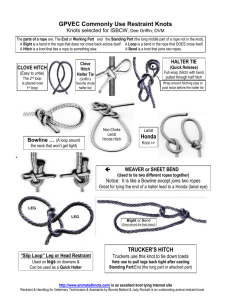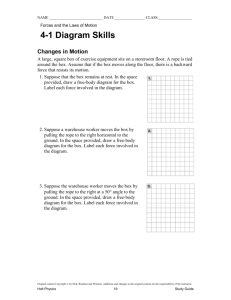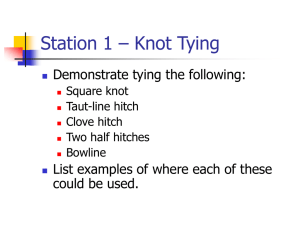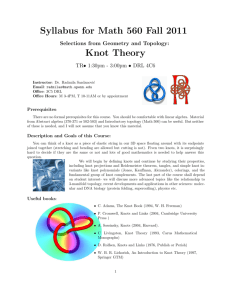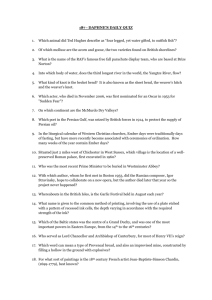2002
advertisement
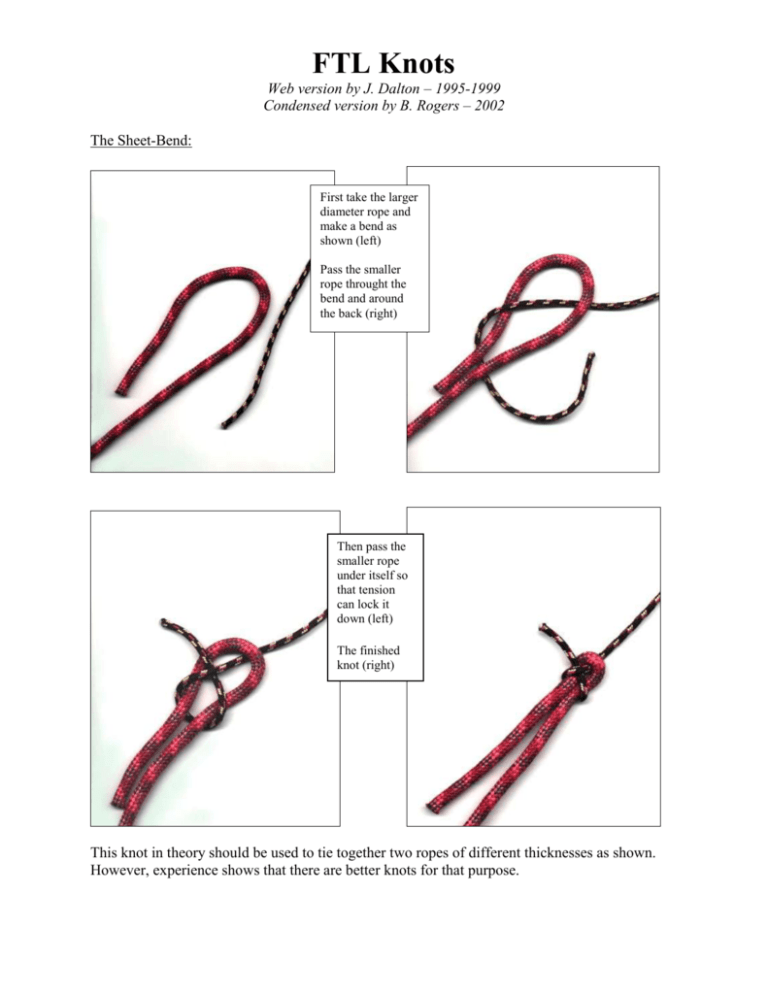
FTL Knots Web version by J. Dalton – 1995-1999 Condensed version by B. Rogers – 2002 The Sheet-Bend: First take the larger diameter rope and make a bend as shown (left) Pass the smaller rope throught the bend and around the back (right) Then pass the smaller rope under itself so that tension can lock it down (left) The finished knot (right) This knot in theory should be used to tie together two ropes of different thicknesses as shown. However, experience shows that there are better knots for that purpose. The Frost Knot: First place one end of webbing within a bend in the other end. NB: the diferent colors here are to illustrate technique, this knot is most often tied with one length of webbing (left). Tie an overhand (see FTM knots) with the folded ends (right). This will result in a loop with the short free end inside it (left). The frost knot is used to tie an etrier (ay-tree-ay). A completed etrier is pictured above. The Butterfly Knot: Start by taking a section in the middle of the rope and making two loops, one big, one small (left). Fold the large loop down over the smaller one (right). Pull the large loop throught the small loop from underneath (left). The finished knot (right). This knot is used to put a loop in the middle of a rope. This knot does not decrease the linear strength of the rope nearly as much as other similar knots. The One-Way Knot: Start with a figure-8 in one end of one rope (left). Follow it through with the end of another rope (right). The finished knot. This knot ties two ropes together in such a way that they will pass through a pulley in one direction. This knot will only pass through a pulley in one direction because of the short tails which come out of the same side. FYI you will still need a knot passing pulley to make this work, and this knot is not as strong as a barrell knot. The Bowline on a Coil: Start with 15 or so feet of the belay line wrapped around your torso with about 3 feet left over (left). Create a loop in the long end of the line, just like you would for the regular bowline (right). Use the short piece on the other side of the wraps to finish off the bowline (left). The finished knot (right). This was often used long ago as an impromptu harness. this is not recommended today because of the availablity of pre-fabricated harnesses and the ability to tie a much better harness from 1 inch tubular webbing. If none of those are available, however, this method is preferable to a single loop around the body because it distributes the weight much more across all those wraps. The Load-Releasing Hitch: Start by creating a long sling out of webbing with a water knot. Clip one end into the line to be tensioned, and have a carabiner attached to your anchor about a foot and 1/2 away (left-top). Make an "X" in the loop where you want to start the hitch (left-bottom). Clip the anchor carabiner into the "X" as shown. This is very important to get right. If this is done incorrectly, the system could be very dangerous to use. Clip across the "X" in line with the system (left-below). Now bring the long remaining end of the loop up toward the hitch and through the lowering line's carabiner, then back through the anchor carabiner as shown (rightbelow). Now begin wrapping the remaining webbing around the system to create the friction that will allow you to release a heavy load (left). When you reach the top, use a third carabiner to clip the loose end to the lowering line's carabiner to finish (below). To be used in a haul system or vertical lowering to release tension after a fall or arrest. The Cross-Chest Harness: Start by measuring out two lengths from your outstretched hand to the opposite shoulder (left). Tie a water knot in the webbing at that point to form a loop. Put your arms through the loop... (right). Making an "X" in the back (left). Clip a carabiner in to complete the harness (right). This is a way to make a fast and easy chest harness if you are top heavy due to a backpack, etc. The Münter Hitch: With your rappel line set up, grap the line with your thumb down as shown (left). Bringing your thumb toward you and flipping your hand over will give you a loop like this one (right). Now without letting go of the loop, grab the rappel line above the loop (left). Clip your carabiner around the two sections you are holding by clipping from the back of your hand to the front (right). Grab the carabiner and pull down to pop the hitch through the carabiner (left). And you're ready to clip in and go (right). A quick and neat rappell/belay device that provides lots of friction. Excellent backup, does put alot of twist in the rope though.


